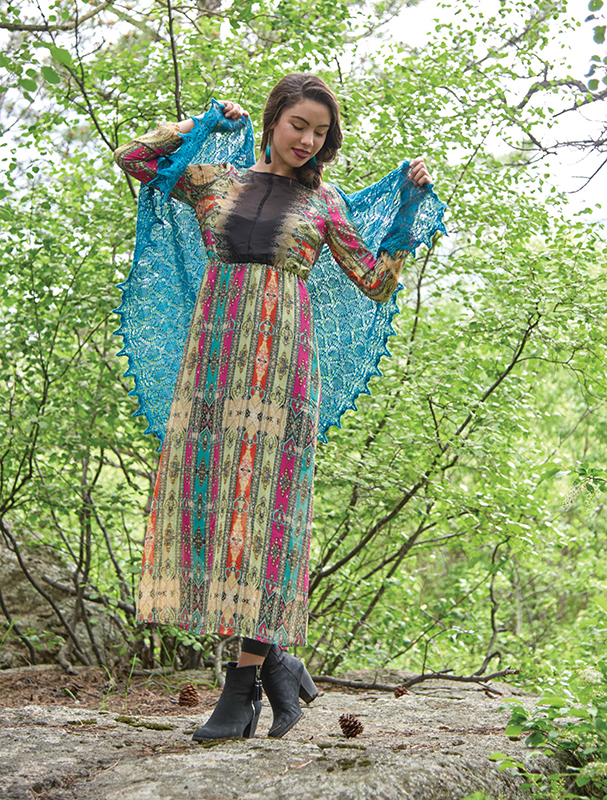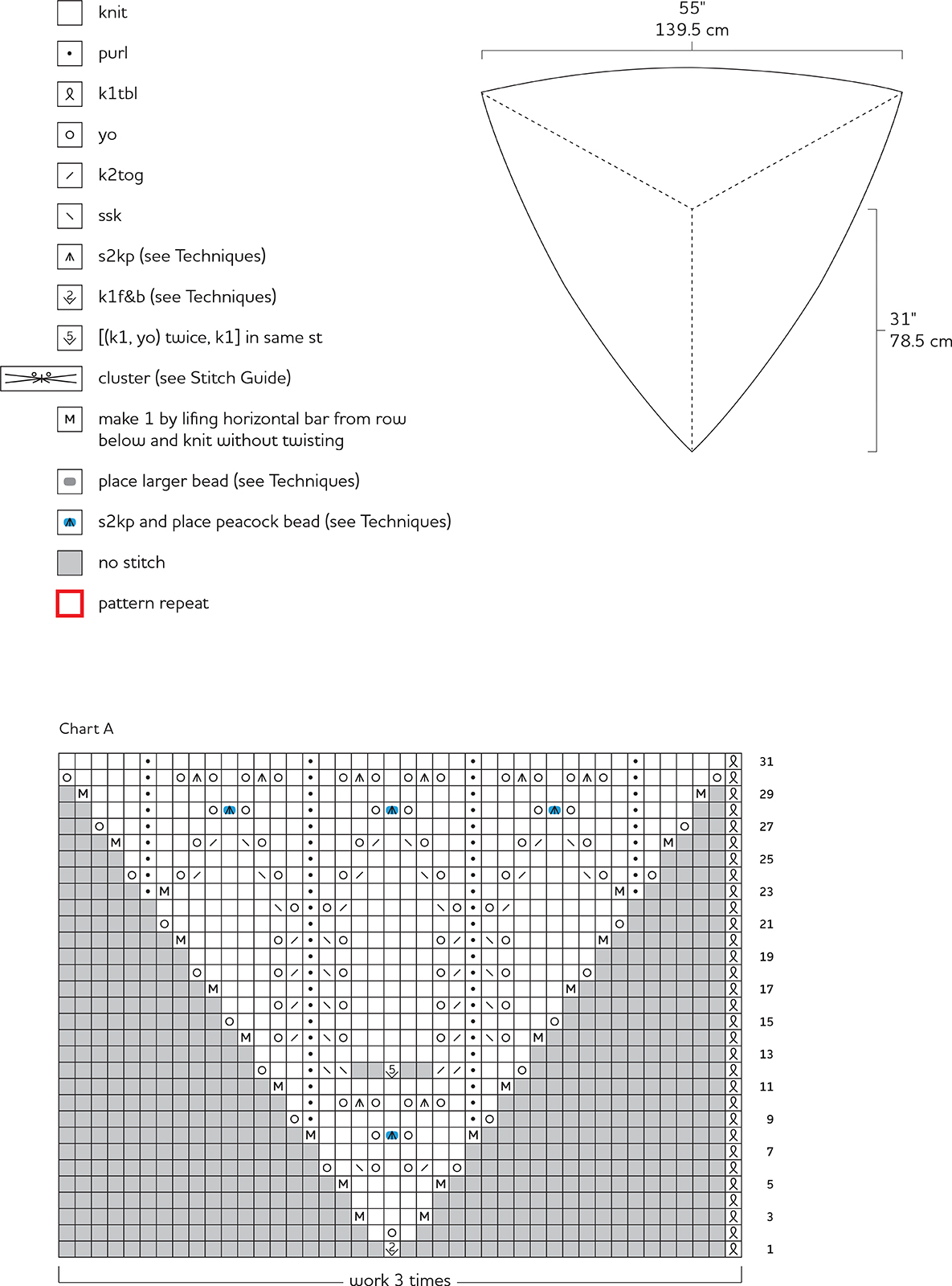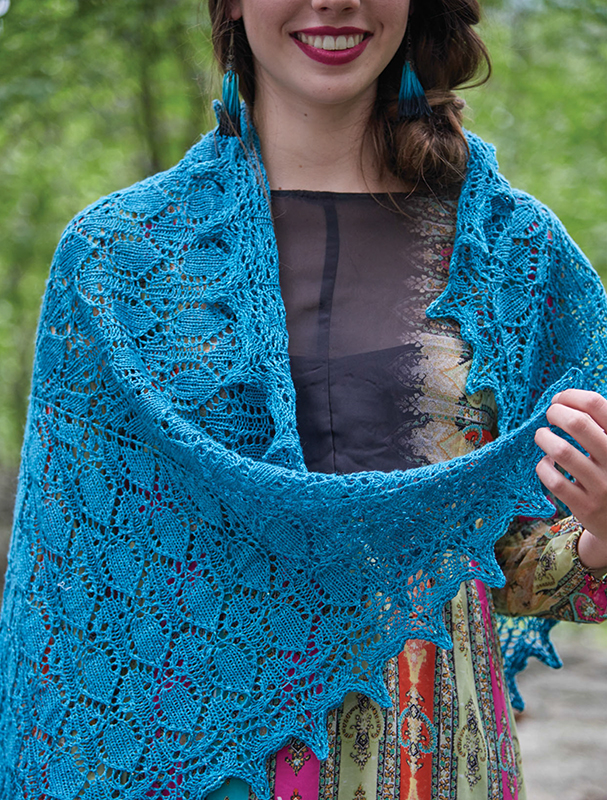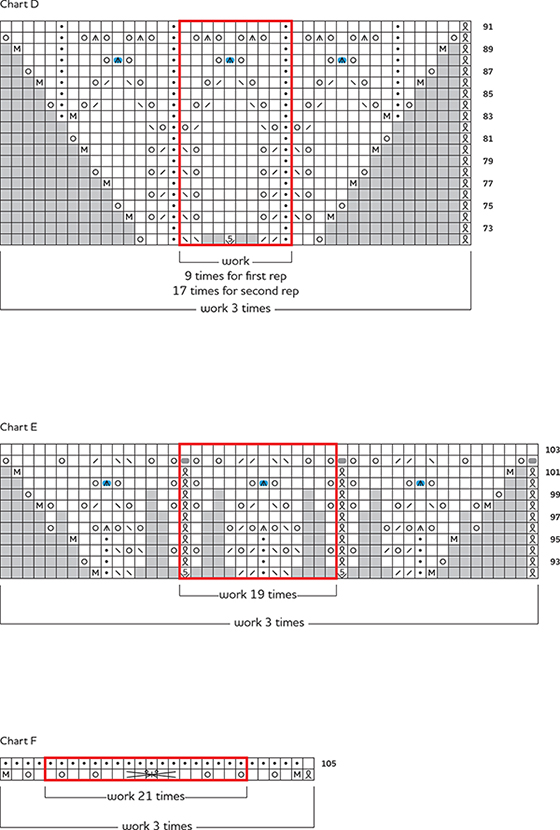
The Pacific Crest Trail is 2,663 miles (4,285 km) long and runs from the Canadian border down through California along some of the highest peaks in the Cascade and Sierra Nevada mountain ranges. It is part of the Great Western Loop, which is 6,875 miles (11,062 km) long and is one of the classic long-distance hikes in the United States.
An equilateral triangle is a triangle with three equal sides and three equal angles. This triangle is one of the most fun and surprising to work, because the three increase lines are a little like playing with a kaleidoscope, and the leaves and vines that form are fun to watch as they develop.

This project begins on double-pointed needles and grows out from the center, worked in the round. As shown, the repeat charts (B–D) are worked a total of two times, but you can make the piece larger by working them a third time if you have enough yarn and beads! This is another riff on the stitch pattern I designed for the Mount Elbrus triangle. Have fun!
28" (71 cm) from center to point of triangle and 491⁄2" (125.5 cm) across side.
Laceweight (#0 Lace).
Shown here: Miss Babs Yet (65% merino, 35% tussah silk; 400 yd [366 m]/ 65 g): Coos Bay, 3 skeins.
Size U.S. 4 (3.5 mm): set of 4 double-pointed (dpn), 24" (60 cm), 32" (80 cm), and 40" (100 cm) circular (cir). Adjust needle size if necessary to obtain the correct gauge.
20 g Miyuki 8/0 Japanese seed beads in silver-lined dark peacock AB #643B; 63 Czech 6/0 seed beads in metallic teal-lined crystal; size U.S. 14 (0.6 mm) steel crochet hook, or size to fit beads; markers (m); tapestry needle; stainless T-pins; blocking mats.
20 sts and 34 rnds = 4" (10 cm) over St st, blocked and relaxed.
Beads: See Techniques.
When you work on the double-pointed needles, use the yarn end from your cast-on to mark the beginning of the round. A locking marker can also be used if desired.
Cluster: Slip 5 sts, one at a time, knitwise, return sts to left needle tip in their new orientation, insert right needle tip into back loops from right to left and ([k5tog tbl yo] 2 times, k5togtbl).
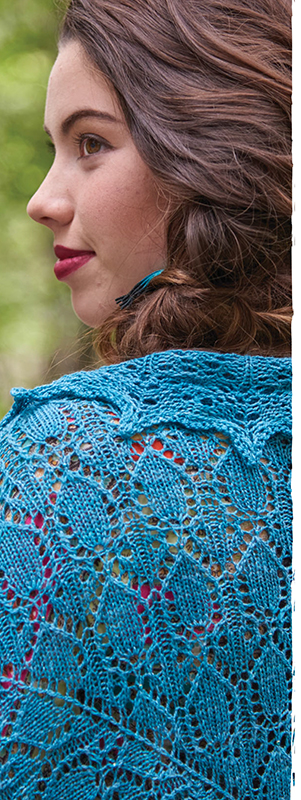
With dpn, CO 6 sts using long-tail method (see Techniques). Distribute sts evenly over 3 dpn. Use yarn tail or place locking marker (pm) for beg of rnd, and join for working in rnds, being careful not to twist sts.
Next rnd: K1tbl around.
Next rnd: Work Rnd 1 of chart A around—9 sts.
Work Rows 2–31 in established patt—126 sts. Change to cir needle when there are too many sts to work comfortably on dpn, then change to longer cir needle as number of sts increases.
Work Rows 32–51 of chart B—84 sts inc’d.
Work Rows 52–71 of chart C—78 sts inc’d.
Work Rows 72–91 of chart D—78 sts inc’d.
Work charts B, C, and D once more—606 sts.
Work Rows 92–103 of chart E—900 sts.
Work Rows 104 and 105 of chart F—1,164 sts.
BO rnd: Working evenly but loosely, k2, return 2 sts just worked to LH needle tip, k2togtbl, [k1, return 2 sts just worked to left needle tip, k2togtbl] to end. Cut yarn leaving a 9" (23 cm) tail, and pull tail through rem st.
Weave in ends but do not trim. Soak in cool water until fully saturated (about 30 minutes). Press to remove water, roll in a towel, and blot to remove extra water.
Block to measurements as shown on schematic, pinning out each “point” at larger beads to form scalloped edge. Allow to dry completely. Shawl will relax to finished measurements after removing pins. Trim ends.
